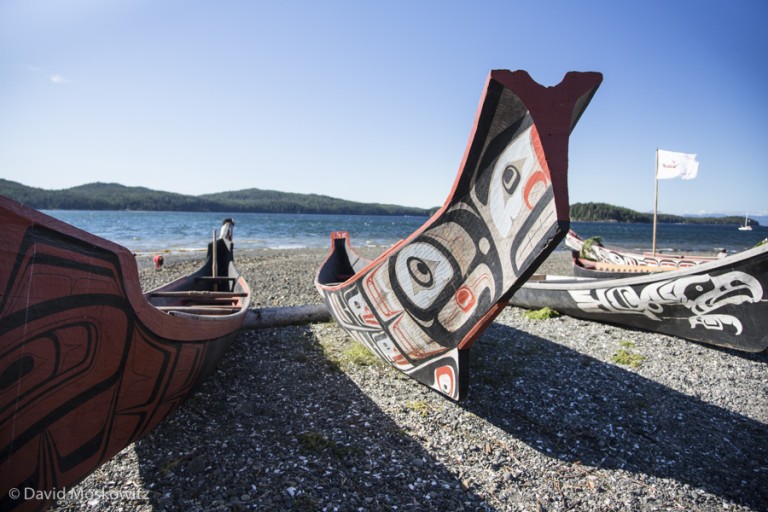Qatuwas 2014: Paddle to Bella Bella
This July I had the pleasure of joining the Learn and Serve Environmental Anthropology Field School (LEAF School) as a guest instructor on a service learning program. We joined the Blue Heron Canoe Family on their canoe expedition from the Puget Sound in northern Washington all the way to Bella Bella on the central coast of British Columbia. The LEAF School is a program of Edmonds Community College run by Dr. Thomas Murphy. I joined the journey about midway up the eastern coast of Vancouver Island.
Each year, indigenous nations from up and down the Northwest Coast of the United States and Canada, as well as first nations with canoeing traditions from the interior of the region and beyond (this year's journey included several Maori people from New Zealand as well as a number of Hawaiians!) travel by canoe, often from their traditional territories to a common destination. Begun in 1989, this is a powerful celebration of the canoeing tradition. This years destination was the Heiltsuk Nation, whose primary village is the town of Bella Bella (Waglisla in Heiltsuk).
Members of the Blue Heron Canoe family and students of the LEAF school paddle the canoe along the shores of an island on the central coast of British Columbia.
Along the route to Bella Bella, canoe families were often hosted for dinner and celebration by the nation whose traditional territory they passed. Here, members of about 20 canoes and their support boats came ashore and were hosted by the Wuikinuxv First Nation in a bay called Open Bight on the mainland coast of British Columbia.
Meals often included traditional foods such as salmon and many other foods from the sea.
Salmon cooking over an open fire in a traditional methods using split cedar to secure the fish.
Before coming ashore, a ceremonial landing often took place. The most elaborate landing protocol at the end when all 42 of this years canoes landed in Bella Bella. Each canoe presented its self and asked for permission to land and share songs and dances with the hosts. The request was responded to with a heartfelt welcome.
Skipper and canoe-builder Michael Evans presents Blue Heron Canoe of the Snohomish people, at the landing ceremony in Bella Bella.
In the evenings, after landing in a new host nation’s territory and enjoying a meal provided by the hosts, each tribe would share songs and dances with the hosts. This evening, in the territory of the Namgis, was hosted in their beautiful long house in Alert Bay, British Columbia.
A canoe is more than a simple boat
Canoes are treated with a great deal of respect as they function not just as a vehicle to move people but as a vessel of culture. The journey is an opportunity for each tribe to celebrate and rejuvenate its unique cultural relationship to the land, sea, and human neighbors.
Cultural uses of plants and animals
Besides participating in canoeing and cultural activities, students in the class learned about traditional uses of plants and animals along the route.
Dr. Murphy explains the identity of a crab found in the intertidal zone close to Fort Rupert, British Columbia.
Dr. Murphy explains the identity of a crab found in the intertidal zone close to Fort Rupert, British Columbia.
Exploring a remote beach in Cape Scott Provincial Park on the northern tip of Vancouver Island.
An amazing journey through a landscape rich in natural and cultural beauty
With years of exploring the Pacific Northwest, I can honestly say this journey was one of the most amazing opportunities I have had to deepen my appreciation and understanding of the people and landscapes of the Pacific Northwest, an opportunity I feel very grateful for.






























